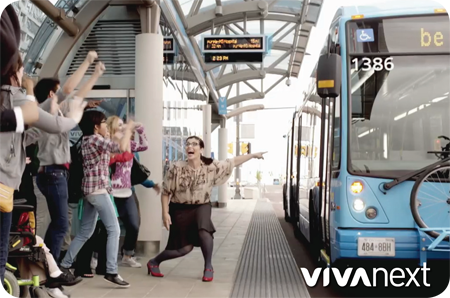In our busy modern lives, time is our most precious commodity, and for the competitive-minded, cutting time can be exciting.
When living through the construction of a Bus Rapid Transit system, you might wonder if it’s really going to make a difference. Is it really worth it?
Bus Rapid Transit has been proven to save time and money and even enhance health, according to a 2013 report by EMBARQ, the transportation branch of the WRI Ross Center for Sustainable Cities.
The report – Social, Environmental and Economic Impacts of BRT Systems – looked at four different Bus Rapid Transit projects and quantified things like time lost during construction, improved travel time, reduced transit operating costs and all of the future environmental and public health impacts that come from Bus Rapid Transit. Then they calculated whether or not it’s worth it.
EMBARQ’s analysis used case studies from the TransMilenio in Bogota, Colombia; Metrobús in Mexico City, Mexico; Rea Vaya in Johannesburg, South Africa; and Metrobüs in Istanbul, Turkey.
saving time
We all know that time is priceless. Every minute spent living our lives instead of waiting in traffic is a minute well-spent. Bus Rapid Transit saves time because buses have dedicated lanes that won’t be clogged with traffic. Passengers pay before they board and have near-level boarding, so they’re able to get on and off buses quickly. Traffic signals that give buses priority saves time, and so does the frequent service, because you spend less time waiting and more time getting where you need to go.
EMBARQ found the typical Metrobüs rider in Istanbul saved 52 minutes a day by using Bus Rapid Transit. In Johannesburg, riders save an average of 13 minutes each way.
Imagine what you could do with 52 more minutes in a day!
saving money
Now take the happiness of saving time, and add the satisfaction of saving money – how exciting is that?
For the cities in the EMBARQ report, Bus Rapid Transit is an investment in the future. One of the biggest benefits is reduced operating costs. Mexico City’s Metrobús Line 3 is estimated to have saved $37 million with lower operating costs that come with Bus Rapid Transit. Istanbul and Turkey also have seen significant savings from lower costs.
Here in York Region, we’re already saving time on Bus Rapid Transit. Riders on our Highway 7 East rapidway are experiencing 35% faster travel times. But the best is yet to come, as we grow around a great rapid transit system. Our region’s population is projected to grow from 1.1 million in 2014 to 1.8 million in 2041, and employment is expected to grow from 565,000 to 900,000. We’re building a system of Bus Rapid Transit lanes to move the future of York Region – and help people get where they need to go, saving time and money along the way.
We’ve caught the excitement, and maybe watching our video will help you catch it too.


